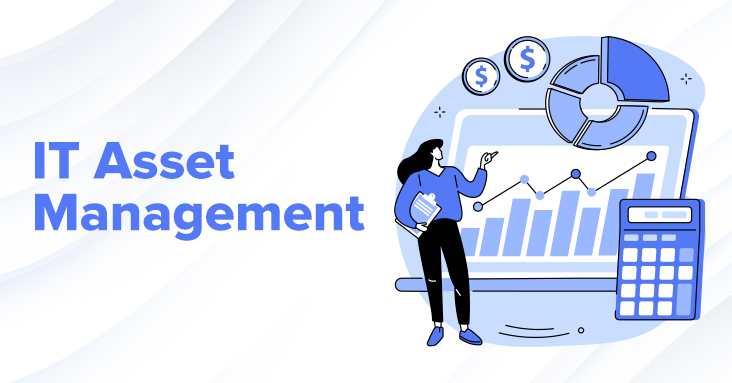What is an IT Ticketing System?
In today’s fast-paced digital environment, businesses must stay on top of IT issues to maintain smooth operations. An IT ticketing system is a vital tool for managing, tracking, and resolving technical problems. Whether it’s addressing a software glitch, hardware malfunction, or network outage, an IT ticketing system ensures these problems are efficiently handled. This article delves into what an IT ticketing system is, how it works, and why it’s essential for organizations of all sizes.
Understanding IT Ticketing Systems
An IT ticketing system, also known as a helpdesk or service desk system, is a software platform designed to manage and streamline IT support tasks. When users or employees encounter technical issues, they submit a “ticket” through the system, which contains details of the issue. The IT team then tracks the ticket from its initial submission to resolution.
The primary purpose of an IT ticketing system is to ensure that no issue goes unresolved and that the IT department can prioritize, assign, and monitor tasks effectively. By automating workflows and providing a structured approach to problem resolution, these systems save businesses both time and money.
Key Features of an IT Ticketing System
To better understand the value of an IT ticketing system, let’s explore some of its key features:
Ticket Management
The core functionality of an IT ticketing system is managing tickets. Tickets serve as digital records for tracking issues, requests, and incidents. Each ticket typically includes:
- Issue description
- Priority level (low, medium, high)
- Status (open, in progress, resolved, closed)
- Assigned IT technician
- Progress notes and solutions
Effective ticket management ensures support teams can track issues in real-time, reducing delays and miscommunication.
Automated Workflows
Automation is a game-changer in IT ticketing systems. Workflow automation eliminates the need for manual task assignments by routing tickets to the appropriate technician based on predefined rules. For example, an issue categorized as a “network outage” can automatically be assigned to a network specialist. This saves time and ensures tickets are handled by the most qualified personnel.
Prioritization and SLAs
Prioritization features allow IT teams to address critical issues first. Many ticketing systems offer Service Level Agreement (SLA) management tools, ensuring support teams meet response and resolution deadlines. High-priority tickets can trigger alerts or escalations if they are not addressed within a set timeframe, ensuring compliance with policies or client agreements.
Knowledge Base Integration
A knowledge base is a repository of helpful articles, FAQs, and troubleshooting guides. IT ticketing systems often integrate with a knowledge base, allowing users to resolve common issues independently, without creating a ticket. This reduces the workload on IT teams and empowers users to find solutions on their own.
Reporting and Analytics
IT ticketing systems provide reporting and analytics tools to help managers monitor performance, identify recurring issues, and analyse technician workloads. Reports on ticket resolution times, user satisfaction, and incident types help organizations make data-driven improvements to their support processes.
Multi-Channel Support
Advanced IT ticketing systems offer multiple communication channels—such as email, phone, chat, and web portals—allowing users to report issues in their preferred way. This feature ensures that tickets are captured regardless of the submission method.
Mobile Access
With remote work becoming more common, IT teams need access to the ticketing system from anywhere. Mobile apps or responsive web interfaces allow technicians to track and resolve issues on the go, enhancing flexibility and ensuring faster resolution, especially for time-sensitive problems.

Benefits of Using an IT Ticketing System
Implementing an IT ticketing system offers several advantages:
- Improved Efficiency
By centralizing all IT requests and issues, the ticketing system simplifies workflows for the IT team. Tickets are easy to track, assign, and prioritize, resulting in faster resolution times. Automation further enhances efficiency by reducing manual tasks. - Enhanced Collaboration
An IT ticketing system fosters collaboration among IT staff by enabling multiple technicians to contribute to a single ticket. This is particularly useful for complex issues that require input from specialists in different areas. It also improves communication between the IT team and users by providing real-time updates through the ticket. - Better Organization and Documentation
Each ticket serves as documentation of an issue, providing a detailed record that can be referenced in the future. This helps technicians resolve recurring problems more efficiently and maintains a history of incidents and solutions, which can be valuable for audits and compliance. - Increased Accountability
With tickets assigned to specific individuals and tracked throughout their lifecycle, IT teams maintain better accountability. Managers can easily see who is responsible for each task, ensuring no ticket slips through the cracks. - Scalability
IT ticketing systems are scalable, accommodating the needs of both small businesses and large enterprises. As an organization grows, the system can handle an increasing number of requests without overburdening the IT team.
Why Your Business Needs an IT Ticketing System
Regardless of the size of your organization, an IT ticketing system offers measurable advantages:
- Faster Response Times
With a ticketing system, issues are logged immediately and routed to the appropriate team members. Automation ensures high-priority tickets receive prompt attention, minimizing downtime and disruptions. - Reduced IT Costs
By streamlining processes and reducing inefficiencies, an IT ticketing system helps save money. It minimizes the time technicians spend on each issue and allows users to resolve common problems through self-service, optimizing resource allocation. - Improved User Experience
Fast and reliable IT support translates into a better user experience for both employees and customers. When issues are resolved promptly, users remain productive and satisfied. A well-implemented ticketing system also provides transparency by keeping users informed about the status of their requests, reducing frustration.
Conclusion
An IT ticketing system is essential for modern IT support, offering an efficient way to manage and resolve technical issues. From ticket tracking and automation to reporting and SLA management, these systems empower IT teams to provide high-quality support while minimizing costs and improving response times. Whether you’re a small startup or a large enterprise, adopting an IT ticketing system is a smart investment that will streamline operations and enhance user satisfaction.
For businesses seeking comprehensive IT ticketing tools, GreenITCo offers innovative solutions tailored to meet organizational needs. Their robust software, which includes integrated ticketing and asset management features, ensures no issue goes unresolved while maintaining optimal productivity across teams.
- Published in Asset audit, Asset Management, helpdesk outsourcing, ITM, Mobile, Technology, technology support
What is IT Asset Management?
IT Asset Management (ITAM) plays a pivotal role in optimizing IT investments and ensuring the efficient use of technology within an organization. Whether you are part of a growing business or a large enterprise, IT Asset Management software helps track and manage hardware, software, and other technological resources, improving efficiency and reducing costs.
Understanding IT Asset Management (ITAM)
IT Asset Management (ITAM) is the practice of managing and optimizing the life cycle of IT assets within an organization. These assets can range from physical hardware (such as computers, servers, and networking equipment) to software licenses, virtual systems, and cloud resources.
The primary goal of ITAM is to maximize the value of IT investments while minimizing risks, reducing costs, and improving productivity. It involves tracking the procurement, deployment, usage, maintenance, and retirement of all IT assets.
Why is IT Asset Management Important?
For businesses to stay competitive, they must ensure their IT infrastructure operates efficiently. Here’s why ITAM is crucial:
- Cost Reduction: By tracking IT assets, businesses can avoid unnecessary purchases and make the most of existing resources.
- Improved Compliance: ITAM ensures that organizations comply with software license agreements and regulatory requirements, reducing the risk of costly penalties.
- Asset Life cycle Optimization: ITAM monitors the life-cycle of IT assets—from procurement to retirement—ensuring optimal performance and timely replacements.
- Risk Management: Maintaining an up-to-date inventory of IT assets helps mitigate risks such as data breaches, system failures, and security vulnerabilities.
For Demo Request Form please visit IT Asset Management Software
Key Components of IT Asset Management
Effective ITAM requires the integration of multiple components to provide a holistic view of the organization’s IT infrastructure:
- Inventory Management: Tracks all IT assets, including hardware, software, and cloud resources, ensuring that nothing is overlooked.
- Software License Management: Ensures compliance with software licenses, avoiding legal issues and over-purchasing.
- Asset Life-cycle Management: Oversees the procurement, deployment, maintenance, and retirement of IT assets to maximize their value and efficiency.
- ITSM Integration: ITAM integrates with IT Service Management (ITSM) processes—such as incident, change, and configuration management—to provide a seamless approach to managing IT infrastructure.
The Role of IT Asset Management Software
Organizations use IT Asset Management software to streamline and automate asset management processes. This specialized tool offers a comprehensive view of the IT infrastructure, making it easier to track, manage, and optimize assets.
Benefits of IT Asset Management Software
- Centralized Asset Inventory: ITAM software provides a single platform to track all IT assets, offering visibility into hardware and software usage.
- Automated Tracking and Reporting: Automates the tracking of IT assets, ensuring no equipment or software goes unaccounted for. It also generates reports to support informed decision-making.
- Compliance Management: Helps ensure compliance with software license agreements, reducing the risk of fines and legal issues.
- Cost Savings: Offers clear insights into IT asset usage, helping organizations avoid unnecessary expenditures on new equipment or licenses.

ITAM vs. ITSM: What’s the Difference?
Although ITAM and ITSM are interconnected, they serve distinct purposes:
- IT Asset Management (ITAM): Focuses on managing the life-cycle of IT assets, offering visibility into the organization’s inventory to ensure efficient use of resources.
- IT Service Management (ITSM): Concentrates on delivering IT services, including processes such as incident, change, and problem management, to align IT services with business needs.
While ITAM manages the hardware, software, and resources, ITSM manages the services delivered to end-users. Integrating ITAM and ITSM fosters a cohesive IT strategy that enhances service quality and optimizes resources.
Choosing the Right ITAM Solution
Selecting the right IT Asset Management solution is critical to managing IT assets effectively. Consider the following factors when evaluating ITAM software:
- Scalability: The software should scale with your business as the number of IT assets grows.
- Ease of Integration: Choose a solution that integrates smoothly with your existing ITSM tools, such as Service-now or Jira.
- Cloud Compatibility: Ensure the software can track and manage cloud assets as effectively as physical ones.
- Customization: Opt for a solution that allows customization to meet your business’s specific requirements.
- Real-time Analytics: Look for software that offers real-time data on asset status, usage, and performance to support quick decision-making.
Key Features of ITAM Software
When evaluating ITAM software, consider the following features:
- Discovery Tools: Automated tools that scan the network to identify connected devices, including computers, servers, printers, and IoT devices.
- Asset Life-cycle Management: Tracks the entire life cycle of IT assets, from procurement to decommissioning.
- Compliance Tracking: Manages software licenses to ensure compliance with agreements.
- ITSM Integration: Unifies asset management with service management through seamless integration with ITSM platforms.
- Reporting and Analytics: Provides insights into asset utilization, costs, and compliance status through comprehensive reporting tools.
The Future of IT Asset Management
The future of ITAM is closely tied to the ongoing digital transformation. As businesses adopt cloud solutions, IoT devices, and AI-driven technologies, managing IT assets will become more complex.
Emerging Trends in ITAM
- AI and Automation: AI-powered tools will automate tasks like asset discovery, compliance tracking, and life cycle management.
- IoT Asset Management: With the rise of IoT devices, ITAM solutions will need to manage a broader array of assets.
- Cloud Asset Management: As cloud adoption increases, ITAM solutions will evolve to manage cloud-based assets more efficiently.
Conclusion
IT Asset Management (ITAM) is essential for businesses aiming to optimize IT investments and reduce costs. By leveraging IT Asset Management software, organizations can streamline asset tracking, ensure compliance, and enhance operational efficiency. As technology evolves, ITAM will become even more critical in helping businesses remain competitive in the digital landscape.
Whether you are a small business or a large enterprise, investing in a robust ITAM solution will yield long-term benefits through cost savings, risk reduction, and improved productivity.
- Published in Asset audit, Asset Management, helpdesk outsourcing, ITM, Mobile, Technology
The role of a Helpdesk and IT ticketing system
The Role of a Helpdesk Ticketing System
A helpdesk ticketing system is a crucial tool that enhances how organizations manage, resolve, and track technical issues, requests, and incidents. In today’s technology-driven business environment, an effective ticketing system for IT support is essential for maintaining seamless operations, ensuring rapid response times, and monitoring recurring problems. Whether in a small business or a large corporation, the necessity for organized communication between users and the IT department is vital. This article examines the role of an IT ticketing system, highlighting its functions, significance, and its contribution to overall operational efficiency.
What is an IT Ticketing System?
An IT ticketing system is a software tool utilized by IT teams to handle and resolve IT tickets, which can include queries, issues, service requests, or problems related to hardware, software, or other technical concerns. Each ticket represents a task or issue, enabling users to submit, monitor, and track these IT tickets from creation to resolution. This process provides a structured approach to managing issues, ensuring that nothing is lost in communication or overwhelmed by numerous requests.
Typically, the ticketing system software incorporates various features such as automation, categorization, prioritization, and ticket routing. This ensures that the appropriate personnel with the required skills address the relevant tasks efficiently.
Key Features of an IT Ticketing System
- Ticket Creation: The process begins when a user submits a support request, which is transformed into an “IT ticket.” Each ticket includes pertinent details about the issue or request, such as the type of problem, severity, and any other relevant information.
- Ticket Assignment and Categorization: Once created, the ticket is assigned to the appropriate IT personnel based on the issue’s type and priority. The system may automatically route the ticket to specific departments or team members specializing in the relevant area.
- Priority Setting: Not all IT tickets are created equal. Some issues, such as network outages, require immediate attention, while others, like requests for software installation, may have lower urgency. An IT ticketing system enables prioritization of tickets based on urgency, importance, and business impact.
- Tracking and Monitoring: Users and IT staff can track the progress of an IT ticket in real time. This transparency is essential for both parties—users can see that their requests are being addressed, while IT staff can manage and organize their workload effectively.
- Knowledge Base and Documentation: A robust IT ticket tool may feature a knowledge base that stores solutions to recurring problems. IT staff can reference this repository, which accelerates resolution times and provides self-help options for users.
- Automation: Many IT ticketing systems come equipped with automation features to streamline repetitive tasks, such as ticket assignment or escalation. Automated workflows minimize human error, ensuring that IT tickets are resolved within the desired timeframe.
- Reporting and Analytics: An IT ticketing system gathers valuable data on support activities. Reporting tools provide insights into ticket resolution times, common issues, team performance, and customer satisfaction, fostering continuous improvement in IT service delivery.

The Role and Importance of an IT Ticketing System
The primary function of a helpdesk ticketing system is to facilitate efficient issue resolution and ensure accountability in IT services. Here are the main ways an IT ticketing system contributes to organizational success:
Centralized Communication Hub
An IT ticketing system serves as a centralized platform for communication between IT teams and end-users. Without such a system, requests for assistance might be scattered across emails, phone calls, or instant messages, leading to confusion, miscommunication, or tasks falling through the cracks. A ticketing system consolidates all requests in one location, making it easier for IT teams to manage their workload and ensuring users know exactly where to seek help.
Streamlined Workflow and Organization
One of the most significant advantages of an IT ticketing system is how it streamlines workflow. By assigning tickets based on category, skill set, and priority, the system ensures that IT personnel handle issues that match their expertise, leading to faster resolution times. It helps IT managers balance workloads, preventing some staff members from being overwhelmed while others remain underutilized.
Accountability and Transparency
When tickets are logged and tracked within a system, accountability is built into the process. Each ticket has a clear trail from creation to resolution, allowing users and IT managers to monitor progress. Additionally, if any issues arise, the history of actions taken on the ticket can be reviewed, enabling the identification of steps to enhance the process. This transparency also ensures users feel valued and informed, as they can track the status of their requests and receive updates, minimizing frustration and reducing unnecessary follow-ups.
Better Resource Management
By prioritizing and categorizing tickets, an IT ticketing system assists in allocating resources where they are needed most. For example, critical system outages will be addressed before lower-priority tasks, such as password resets or minor software glitches. This ensures that IT departments function efficiently and allocate resources in alignment with business needs.
Improved Service Quality
With a structured IT ticketing system in place, IT teams can provide higher-quality service. Automating repetitive tasks, maintaining accurate records, and routing tickets to the right personnel can significantly reduce resolution times. Furthermore, the system’s ability to monitor performance and generate reports helps IT teams continuously enhance their services by identifying areas needing additional attention.
Data-Driven Decision Making
The data collected through an IT ticketing system can be invaluable for decision-making. Managers can analyze trends in issues, identify recurring problems, and even anticipate potential system vulnerabilities. This data aids in planning future IT strategies, optimizing resource allocation, and improving overall service delivery.
Enhances User Satisfaction
A reliable IT ticketing system keeps users satisfied by providing a quick, efficient, and transparent way to resolve their issues. Users feel more confident when they know their requests are being handled systematically and can track the status of their IT tickets at any time.
Conclusion
In today’s fast-paced business environment, where IT systems are the backbone of most operations, the importance of an IT ticketing system cannot be overstated. It offers an organized, efficient, and accountable method for managing IT support requests, ensuring timely issue resolution, and fostering better communication between IT teams and end-users. By streamlining workflows, improving resource management, and providing transparency, a ticketing system ultimately enhances operational efficiency and user satisfaction, making it an indispensable tool for modern organizations.
- Published in Technology
Importance of Asset Audit for Business
The importance of asset auditing for the organization cannot be underrated. Asset audit can help the organization minimize the costs spent on the depreciation and maintenance of the assets. Asset auditing software gives an idea to lower costs and helps the business to make an informed decision.
Our aim of asset audits is to manage compliance and task management and ensure asset accuracy. These factors are essential for making an informed business decision and streamlining workflow. Improvise business assets and resources efficiency with asset audits.
How asset audit can help you in business management?
Asset auditing plays an important role it is a process for ensuring the highest standards of accuracy. It also helps in compliance management of a company’s valuable equipment or machinery, helping to bring about more streamlined work processes and make informed decisions.
Every organization depends on physical & IT assets for its day-to-day operations. It requires long-term arrangements for auditing assets and managing them thoroughly. ‘ Asset Audit’, refers to a process by which an organization physically checks that the assets records exist, their location, status, condition, depreciation value & more. Check the availability of assets, their usage, and much more. Many tasks are managed by asset audit.
How can your business accelerate growth with an asset audit is done:
Without performing Asset audits for business thoroughly, it will not be possible to deliver the quality of work and asset usage. It the crucial to conduct an asset audit to make sure those assets are still physically available, their status and depreciation status, and much more.

Every organization owns assets & so it becomes important to conduct asset audits to improve the functionality & long life of assets. To maintain the asset’s life and to avoid issues like human errors, ineffective process controls, improper functionality, and more. Asset auditing hardware is an effective way to track and manage a range of business assets. It can simplify the process, streamline workflow, and track operations effectively.
Hardware asset management is the process of managing IT components like desktops, laptops, servers, etc. It manages assets from verification to asset depreciation. With the hardware asset management process, you can get real-time details of your hardware asset inventory and much more details. It gives a bird’s-eye view of the asset life cycle and an overview of how assets are used in your organization & their performance.
We have highlighted the major benefits that asset audit
Business enhancement
An asset audit takes a birds-ey view of your organization’s internal & external systems and control. It suggests improvements that can make your business more efficient & productive. You can expect that the asset audit system offers a way to improve internal controls, business systems, accounting, and operational efficiencies, all identified through the audit process.
Compliance Management
The main aim of the audit is to meet the requirements and regulations of the business model. The asset audit assures the business owners or shareholders or buyers management of compliance and assets operations. are under control. Features of asset audit help business owners to make informed financial decisions in and more affirmed way.
Improvise Credibility at work
An audit provides asset verification and fair representation of the asset’s current situation. This provides credibility and confidence to the organization’s customers/clients, stakeholders, investors, and buyers.
Detect Preventive measures for Fraudulence
It’s estimated that up to 30% of businesses are subject to fraud, error, and insecurities. Error and insecurities at the workplace can occur without being detected, and it is a matter of concern. An asset audit can be an effective tool to identify fraud and opportunities that commit errors in operations and insecurities to the business. An efficient asset audit management system identifies an organization’s systems. Controls and suggests ways to strengthen these to prevent errors from occurring.
Better Planning and Budget system
An audit confirms the accuracy of an organization’s financial system and budget analysis. Asset audits conducted can improve future planning, decision-making, and budgeting. It’s a detailed process and can result in scrutinizing the expense made on certain types of income, expenditure, and assets.
Accurately calculate depreciation
Depreciation management of your assets can depend on how often they have been utilized and the condition in which they are kept. There is the reason for the depreciation of your fixed assets since they are steadily running to support your business. This means the value of assets would decrease with time, there is a requirement to manage the depreciation value. It is important to understand different assets will have different rates of depreciation.
Audit Director Bharat Gupta and the Audit team provide reviews and audits for organizations of all sizes and industries. To find out more about how we can help you, please contact Bharat on 09769022209 or email contactus@greenitco.com
- Published in Networking, Technology




